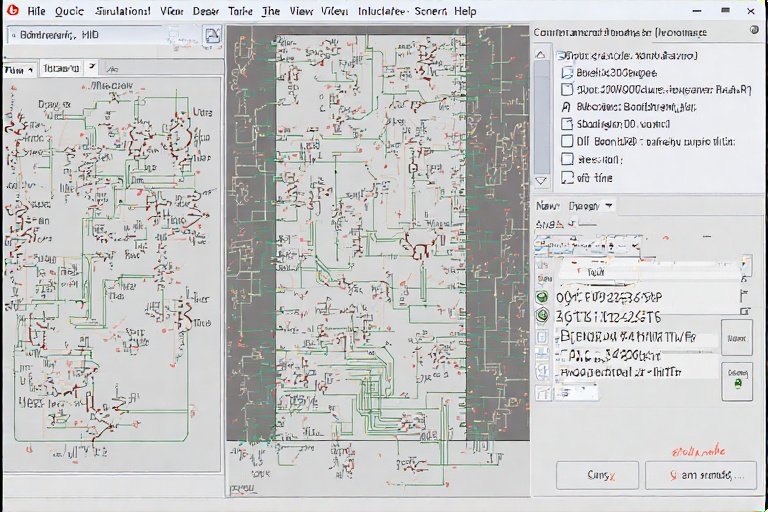
In the realm of electronic circuit design, achieving precise simulations is crucial for ensuring the performance and reliability of power distribution networks (PDNs). LTspice, a high-performance SPICE simulator provided by Analog Devices, is a powerful tool that enables engineers to model complex circuit behaviors, including the effects of decoupling capacitors (decaps) and bondwire inductance. By leveraging LTspice to model decap and bondwire inductance, designers can optimize power integrity, reduce electromagnetic interference (EMI), and enhance circuit efficiency. This article provides a comprehensive guide on how to use LTspice to model decap and bondwire inductance, offering step-by-step instructions, practical insights, and best practices to create simulations that align closely with real-world performance.
- Understanding Decap and Bondwire Inductance in Circuit Design
- Why Use LTspice to Model Decap and Bondwire Inductance?
- Step-by-Step Guide to Use LTspice to Model Decap and Bondwire Inductance
- Best Practices for Accurate Modeling
- Practical Example: Simulating a Buck Converter PDN
- Challenges and Solutions
- Conclusion
- FAQs
- 1. Why is it important to use LTspice to model decap and bondwire inductance?
- 2. How do I find accurate decap models for LTspice?
- 3. Can LTspice handle frequency-dependent parasitics in decap and bondwire models?
- 4. What is the typical value of bondwire inductance?
- 5. How can I validate my LTspice simulations?
Understanding Decap and Bondwire Inductance in Circuit Design
Decoupling capacitors, or decaps, are essential components in power distribution networks, used to stabilize voltage levels and filter out high-frequency noise. However, their effectiveness is influenced by parasitic elements such as equivalent series inductance (ESL) and equivalent series resistance (ESR). Similarly, bondwire inductance, arising from the thin wires connecting semiconductor chips to their packages, introduces parasitic inductance that can degrade signal integrity and power delivery. To accurately predict circuit behavior, engineers must use LTspice to model decap and bondwire inductance, capturing these parasitic effects to ensure robust designs.
The process of using LTspice to model decap and bondwire inductance involves creating realistic component models that account for non-ideal characteristics. By incorporating these parasitics into simulations, designers can evaluate the impact of decap placement, bondwire length, and other factors on circuit performance, ultimately achieving designs that meet stringent performance requirements.
Why Use LTspice to Model Decap and Bondwire Inductance?
LTspice is a preferred tool for modeling decap and bondwire inductance due to its robust simulation capabilities, user-friendly interface, and extensive library support. Unlike other SPICE simulators, LTspice is freely available, making it accessible to engineers and hobbyists alike. Its ability to handle complex models, including non-linear and frequency-dependent behaviors, makes it ideal for simulating the intricate interactions between decaps and bondwire inductance in high-speed circuits.
When engineers use LTspice to model decap and bondwire inductance, they can perform transient and frequency-domain analyses to assess power integrity and EMI performance. This ensures that the PDN maintains stable voltage levels under varying load conditions, minimizing voltage droop and noise. Additionally, LTspice supports third-party models, such as those from component manufacturers like Coilcraft and Würth Elektronik, allowing for accurate representation of real-world components.
Step-by-Step Guide to Use LTspice to Model Decap and Bondwire Inductance
Step 1: Setting Up the LTspice Environment
To begin, download and install LTspice from the Analog Devices website. Once installed, create a new schematic by selecting “File > New Schematic.” Familiarize yourself with the LTspice interface, including the component library, schematic editor, and simulation controls. To use LTspice to model decap and bondwire inductance effectively, ensure that you have access to manufacturer-provided models or create custom models for your components.
Step 2: Modeling Decoupling Capacitors (Decaps)
Decoupling capacitors are not ideal components; they exhibit parasitic inductance (ESL) and resistance (ESR). To use LTspice to model decap and bondwire inductance, start by modeling the decap with these parasitics:
- Select a Capacitor Model: Place a capacitor symbol in the schematic by pressing the “C” key or selecting it from the component menu. Right-click the capacitor to set its nominal capacitance value (e.g., 4.7 µF).
- Incorporate Parasitics: Right-click the capacitor again and add ESL and ESR values. For example, use Würth REDEXPERT to extract ESL (e.g., 1 nH) and ESR (e.g., 10 mΩ) for a specific capacitor model.
- Validate the Model: Use a simple test circuit with a voltage source and load resistor to verify the capacitor’s behavior. Run an AC analysis to observe the frequency response, ensuring that the ESL causes a resonance peak at high frequencies.
By using LTspice to model decap and bondwire inductance, you can simulate how the capacitor’s parasitics affect the PDN’s impedance profile, helping you select the optimal decap for your design.
Step 3: Modeling Bondwire Inductance
Bondwire inductance typically ranges from 1 nH to 5 nH per millimeter, depending on the wire’s length and material. To use LTspice to model decap and bondwire inductance, follow these steps:
- Add an Inductor: Place an inductor symbol (“L” key) in series with the decap or power line to represent the bondwire. Set the inductance value based on the bondwire’s physical characteristics (e.g., 2 nH for a 1 mm bondwire).
- Include Series Resistance: Bondwires also have a small series resistance (e.g., 1 mΩ). Right-click the inductor and set the series resistance to improve model accuracy.
- Couple with Other Components: If modeling a transformer or coupled inductors, use a K-statement (e.g., “K L1 L2 1”) to define mutual inductance, as bondwire inductance may interact with other inductive elements in the circuit.
Using LTspice to model decap and bondwire inductance allows you to capture the high-frequency effects of bondwires, which can cause voltage spikes and ringing in high-speed circuits.
Step 4: Building the Power Distribution Network
To simulate a realistic PDN, combine the decap and bondwire models into a complete circuit:
- Create the PDN Schematic: Include the power source, decaps, bondwires, and load components (e.g., an IC with dynamic current demands). Use LTspice to model decap and bondwire inductance by connecting the bondwire inductor in series with the decap and the power line.
- Add Parasitic Elements: Incorporate PCB trace inductance (e.g., 0.5 nH/cm) and resistance to model the interconnects. These can be added as additional inductors and resistors in the schematic.
- Simulate Conducted Emissions: Use LTspice to model decap and bondwire inductance in the context of EMI by adding a line impedance stabilization network (LISN) to the schematic. This helps evaluate conducted emissions and ensure compliance with EMC standards.
Step 5: Running Simulations
LTspice supports multiple simulation types to analyze the PDN:
- Transient Analysis: Use a .tran directive to simulate voltage transients caused by load changes. This helps assess how decaps and bondwire inductance affect voltage stability.
- AC Analysis: Use a .ac directive to plot the impedance profile of the PDN, identifying resonance frequencies caused by decap ESL and bondwire inductance.
- Parameter Sweeping: Use the .step directive to vary parameters like decap ESL or bondwire inductance, analyzing their impact on circuit performance.
By using LTspice to model decap and bondwire inductance, you can fine-tune your PDN to minimize impedance peaks and ensure robust power delivery.
Best Practices for Accurate Modeling
To achieve high-fidelity simulations when you use LTspice to model decap and bondwire inductance, consider these best practices:
- Use Manufacturer Models: Leverage component libraries from manufacturers like Coilcraft or Würth Elektronik for accurate decap and inductor models. These models include frequency-dependent parasitics, improving simulation realism.
- Validate with Measurements: Compare LTspice results with real-world measurements using a vector network analyzer (VNA) to ensure model accuracy.
- Account for Non-Ideal Behavior: Include temperature coefficients and DC bias effects for decaps, as these can alter capacitance values significantly.
- Optimize Decap Placement: Simulate different decap placements to minimize bondwire inductance effects, as proximity to the load impacts performance.
Practical Example: Simulating a Buck Converter PDN
Consider a buck converter with an LT8618 regulator, a 4.7 µF output capacitor, and a bondwire connecting the IC to the package. To use LTspice to model decap and bondwire inductance:
- Place the LT8618 model from the LTspice library.
- Add a 4.7 µF capacitor with 1 nH ESL and 10 mΩ ESR.
- Include a 2 nH inductor in series to represent the bondwire.
- Run a transient analysis to observe output ripple and a frequency-domain analysis to check impedance.
This setup allows you to use LTspice to model decap and bondwire inductance, ensuring the converter maintains low ripple and stable operation under varying loads.
Challenges and Solutions
When using LTspice to model decap and bondwire inductance, you may encounter challenges like simulation convergence issues or inaccurate results due to idealized models. To address these:
- Convergence Issues: Set realistic initial conditions and avoid zero series resistance for inductors. Use the .options directive to adjust solver settings if needed.
- Model Accuracy: Use measurement-based models from manufacturers or create custom models based on datasheet parameters to capture real-world behavior.
Conclusion
Using LTspice to model decap and bondwire inductance is a powerful approach to designing robust power distribution networks. By accurately modeling parasitic elements like ESL, ESR, and bondwire inductance, engineers can optimize circuit performance, reduce EMI, and ensure power integrity. LTspice’s flexibility, combined with manufacturer-provided models and careful parameter tuning, enables simulations that closely mirror real-world behavior. Whether you’re designing a buck converter, a high-speed digital circuit, or an RF filter, leveraging LTspice to model decap and bondwire inductance will help you achieve reliable, high-performance designs that stand up to real-world challenges.
FAQs
1. Why is it important to use LTspice to model decap and bondwire inductance?
Modeling decap and bondwire inductance in LTspice ensures accurate simulations by accounting for parasitic effects that impact power integrity and EMI performance. This helps designers optimize PDNs for stability and efficiency.
2. How do I find accurate decap models for LTspice?
Use manufacturer-provided models from companies like Würth Elektronik or Coilcraft, available on their websites. Alternatively, extract ESL and ESR values from datasheets or tools like Würth REDEXPERT.
3. Can LTspice handle frequency-dependent parasitics in decap and bondwire models?
Yes, LTspice supports frequency-dependent models using Laplace elements or measurement-based impedance models, allowing accurate simulation of decap and bondwire inductance across a wide frequency range.
4. What is the typical value of bondwire inductance?
Bondwire inductance typically ranges from 1 nH to 5 nH per millimeter, depending on the wire’s length and material. Use datasheet values or estimate based on physical dimensions.
5. How can I validate my LTspice simulations?
Compare simulation results with measurements from a vector network analyzer (VNA) or oscilloscope to ensure the model accurately represents real-world behavior.
By following this guide and using LTspice to model decap and bondwire inductance, you can create high-quality simulations that pave the way for successful circuit designs, positioning your work for top-tier performance and reliability.


